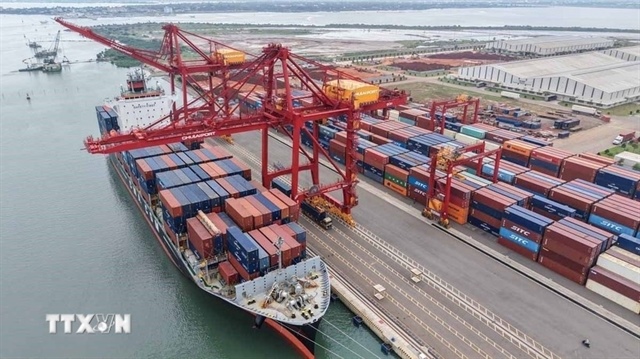Tech-led foundation crucial in e-commerce
Tech-led foundation crucial in e-commerce
Vietnam’s e-commerce development is a bright spot for Industry 4.0 with a high growth rate of 20-30 per cent. Dang Hoang Hai, director of the Vietnam e-Commerce and Digital Economy Agency under the Ministry of Industry and Trade, told VIR’s Nguyen Thu about the ambitions contained in the national plan on e-commerce development in Vietnam for the next few years.
The government recently promulgated a masterplan on e-commerce development in Vietnam for the 2021-2025 period. Could you offer more details on what the plan means for the current development of e-commerce?

Dang Hoang Hai, director of the Vietnam e-Commerce and Digital Economy Agency under the Ministry of Industry and Trade
|
The national e-commerce master plan serves as a macro-oriented policy document and acts as a compass for future advancement that has to be closely linked with strategies and policies on participating in Industry 4.0.
Under that, it set targets for e-commerce that 55 per cent of the population will do online shopping by 2025, with average consumer spending rising to $600 by 2025, from $200 in 2018.
Besides enhancing Vietnam e-commerce’s scale with desired targets, it added targets for infrastructure of ancillary services, the application of e-commerce in enterprises, a human resources development plan, and e-commerce development among economic regions.
Along with targets are general solutions, requiring cooperation with related ministries, authorities, and provinces nationwide to develop all aspects of e-commerce and support services.
Under the masterplan, it sets a non-cash payment target to reach 50 per cent, in which payment made through intermediary service providers will hit 80 per cent. Will this target be hard to reach?
Promoting e-payments towards a cashless society is an indispensable development which boosts economic growth and supports universalisation of banking and financial services.
The government already approved a scheme to intensify payment for public services via banks, including tax, electricity, water, hospital, and education fees. The scheme also targets non-cash payments being accepted by 70 per cent of electricity companies, 70 per cent of water companies, 100 per cent of universities and colleges, and 50 per cent of hospitals in major cities.
Electronic invoices are a solution that brings many benefits for businesses and regulators. The transition from using paper to electronic invoices is an inevitable requirement of a modern and transparent trading system. The Ministry of Industry and Trade (MoIT) believes that this is not a difficult goal to achieve.
Although e-commerce development is blooming, customers remain concerned about product and service quality; thus the rate of cash-on-delivery payments is still a significant part of the Vietnamese online shopping market. How can this rate be reduced?
Although the non-cash payment infrastructure has been completed and always ready to serve, consumers still lack confidence when buying on websites and apps, and there are still many shortcomings. Thus, in order to increase consumer confidence and legal issues, there is a plan for that.
For instance, in 2020 the MoIT was assigned to act as the focal point in developing a decree amending and supplementing a number of articles of Decree No.52/2013/ND-CP from 2013 on e-commerce. The draft provides for stricter control over operations of e-commerce companies and foreign investment in the sector in Vietnam, including new conditions for foreign investment and stricter requirements on operators of e-commerce platforms in order to strengthen responsibility of owners as well as information and origin of goods.
Last year, the Vietnam Directorate of Market Surveillance under the MoIT established a taskforce in charge of e-commerce. This is a new point showing the determination to fight against smuggling, counterfeiting, unknown origin, and intellectual property rights violations.
What are the main obstacles preventing enterprises from applying technology in e-commerce activities?
Generally the application of e-commerce has been popularised in businesses, but the difficulties they have still focus on creating trust and attracting buyers.
Statistics from the MoIT show that up to 50 per cent of enterprises encounter this obstacle when applying e-commerce in business activities. Moreover, the competition of e-commerce businesses is also increasing, and many businesses attract and create trust for users by implementing their own policies.
On the other hand, businesses must also implement innovative measures in technology, create their own characteristics, and improve competitiveness. Businesses in this sector that want to achieve growth must be built on a good technology foundation.


























